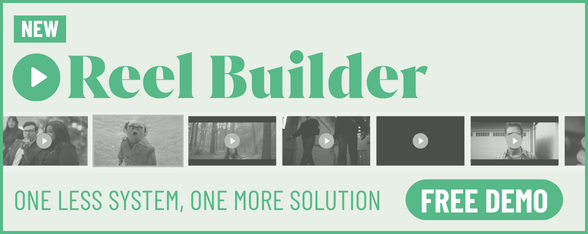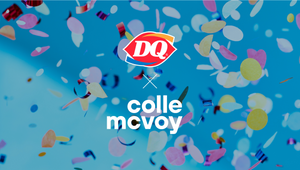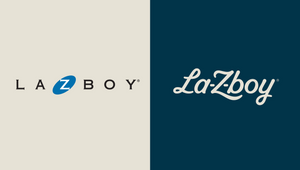
Creativity Squared: Humour as a Design Language with Matthew Ulstad

Matthew Ulstad is a design director at Minneapolis brand design firm 10 Thousand Design. He’s had the honour of creatively solving problems for myriad clients including Bentley Motors, Best Buy, Cub Cadet, Invisalign, Organic Valley, the Epilepsy Foundation, AIGA and more. When he’s not deep in the weeds of design, Matthew enjoys spending time with his wife, two kids and an eclectic mix of hobbies and interests that are too numerous to count.
Person
Creatively, I would describe myself as a renaissance man of sorts in the most self-deprecating way possible. The philosophical debate between specialists and generalists has burned brightly in design for years. Then there’s me, the person generalists can look at to make themselves feel special. I've long been envious of the focus and craft that specialists cultivate. Yet I’ve been unable to limit my attention to a singular design discipline because I can see all its connections to the larger world. A modern designer should be curious, investigative and articulate in a constant stream of outputs and topics previously reserved for other disciplines and clients in ancient times. And I probably believe that because it's the only way I can function.
I'm an introvert who has learned to be more extroverted, albeit in the most self-deprecating way possible. I grew up home-schooled on a farm in Minnesota, and the older I got the more intentional I became about honing how I communicated in ways that got me not just laughs but attentive ears. But yes, I'm sure the predictable stereotypes about introverts and extroverts probably still apply to some extent.
Humour is core to how I relate to people professionally and personally, and it probably creates its fair share of misunderstandings and occasional offences. I grew up on the humour of ’80s A-Team character H.M. Murdock, actor Jim Varney and comedian Bo Burnham, and I'm a caustic regurgitation of that strange puree in a designer's body. But humour is how I process things, ranging from serious to trivial. And as my family has learned, I give a shit because I give a shit.
And I would be remiss not to mention my wife and children, who have genuinely shaped who I am now more than any other external force.

Photo Caption: Farm to (Design) Table
Product
When assessing creative work, it always comes back to one question for me: "If I saw this on the weekend, would I think it was cool?"
Ill-defined and subjective? Definitely.
Ineloquent? Always.
But I have (too) many interests outside of work. That's where I can turn off the industry language in my brain and just be a human enjoying a hobby or product. And it's in this state of mind that I can be the most honest with myself. My bullshit metre is high, but so is my desire to emotionally connect to things I care about. And that's the headspace I want to channel for assessing creative work. Would normie me like this apart from all the personal creative fetishes, industry expectations, strategic frameworks and RTBs? Does this not only clear the audience's bullshit metre but also create joy, excitement, endearment?
This is where my generalist mentality shines. Even if I’ve had no prior personal experience with a client or project, there are opportunities to be a sponge and start figuring out the nuances of new vehicles, for example, for design thinking to manifest.
And that's how I've created my most satisfying work, which oddly tends to be for lesser-known brands: the underdogs, the dinosaurs, the disruptors. Anyone can do a project for Apple or Nike and sell a 10/10 creative idea. The expectations have already been set. But I find much more meaning in taking a brand with 2/10 creative and bringing them to a 6/10 in a way that surprises their audience. That's the real magic of what design can do.
Process
My process starts with trying to understand not just the creative brief or strategic framework but also who the client is, what makes them tick, what the real business problem is, what makes their audience tick and what creative levers we’re already pulling. From there, it's usually self-guided research to understand the competition and how the general category aligns with or falls short of modern human expectations.
At this point, I start to feel properly kicked-off on a project, and I can generate some creative output. This usually takes two forms.
First, I start consuming more design-specific image feeds, not with a predetermined vision in mind, but more through a stream-of-consciousness scrolling while asking myself, "If the progress was forced to solve the problem, how would it do so and why would that be smart?" This approach dead-ends 95% of the time, but the other 5% can lead to unexpected connections and potential ways to find the solutions, often in a way that breaks my preconceived tendencies or go-to tricks.
And second, at the risk of sounding like a broken record, it's the Weekend BS-Meter™ test again. What can we do that I (or someone more in the know) would pay attention to on the weekend? When people let their emotional guard down, their intellectual guard goes up a notch to ward off things that distract them from what truly matters to them.
Now I can merge these two streams into actual concepts with a sense of authorship and ownership that hopefully transcends the sum of its parts into something new entirely.
Press
The seeds of creativity, work ethic and determination were planted in my life as a kid. Growing up on a farm in western Minnesota, I worked alongside my dad and grandpa as they creatively crafted solutions to problems and sought to fix things in ways that an off-the-shelf solution couldn’t. Meanwhile, I gravitated toward everything they didn’t understand, like art, comics, video games, punk rock and skateboarding. It may have taken years for my parents to understand what I do for a living, but the apple didn’t fall far from the tree.
My father and his father were DIY self-starters who doubled as the neighbourhood fix-it guys. “No” and “I don’t know how” were never part of their lexicon. My dad was a full-time farmer and part-time welder, carpenter, inventor, and mechanical and electrical engineer. He always spoke of the value of doing things yourself and never paying others for an inferior solution that you could top with your own ingenuity.
Fast-forward to the present day, and that’s the same spirit and principle that I strive to bring to design. A spirit of the DIY work ethic and an unwillingness to accept the status quo is what drives innovation.
You must live life to create meaningful design and spend time with the people you love, doing what you love. It’s here that I collect inspiration for future projects. I constantly gather little bits and pieces of design wherever I go. A funky letter I saw on a small-town bar’s sign. The layout used in the pages of an old book in a thrift store. The line quality my son used in a drawing he made over breakfast.
We work in an era of AI prompts and increasingly automated and democratised tools. We don’t lack inspiration or points of reference, but we still crave an interesting juxtaposition of these things that speaks deeper to the human spirit. Put on your weekend best and a DIY punk rock disposition, and you might find it.















